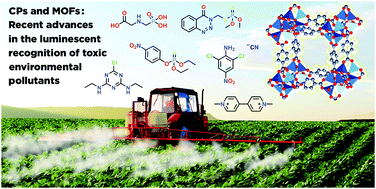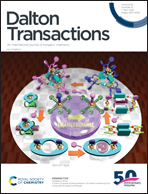Efficient chemosensors for toxic pollutants based on photoluminescent Zn(ii) and Cd(ii) metal–organic networks
Abstract
Optical sensors with high sensitivity and selectivity, as important analytical tools for chemical and environmental research, can be realized by straightforward synthesis of luminescent one-, two- and three-dimensional Zn(II) and Cd(II) crystalline coordination arrays (CPs and MOFs). In these materials with emission centers typically based on charge transfer and intraligand emissions, the quantitative detection of specific analytes, as pesticides or anions, is probed by monitoring real-time changes in their photoluminescence and color emission properties. Pesticides/herbicides have extensive uses in agriculture and household applications. Also, a large amount of metal salts of cyanide is widely used in several industrial processes such as mining and plastic manufacturing. Acute or chronic exposure to these compounds can produce high levels of toxicity in humans, animals and plants. Due to environmental concerns associated with the accumulation of these noxious species in food products and water supplies, there is an urgent and growing need to develop direct, fast, accurate and low-cost sensing methodologies. In this critical frontier, we discuss the effective strategies, chemical stability, luminescence properties, sensitivity and selectivity of recently developed hybrid Zn(II)/Cd(II)–organic materials with analytical applications in the direct sensing of pesticides, herbicides and cyanide ions in the aqueous phase and organic solvents.

- This article is part of the themed collections: Celebrating Latin American Chemistry and 2021 Frontier and Perspective articles


 Please wait while we load your content...
Please wait while we load your content...